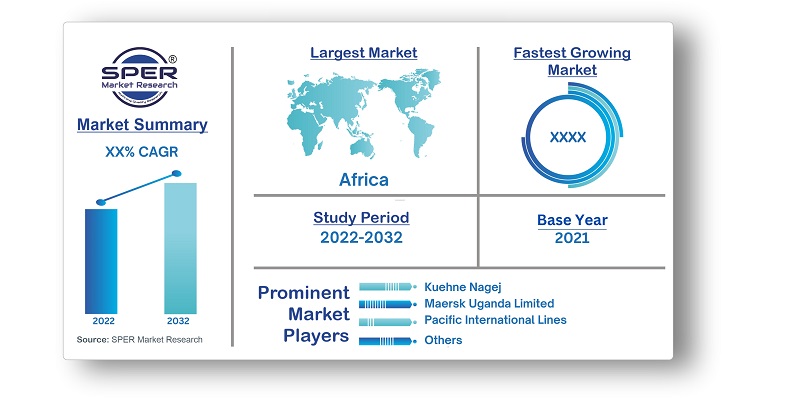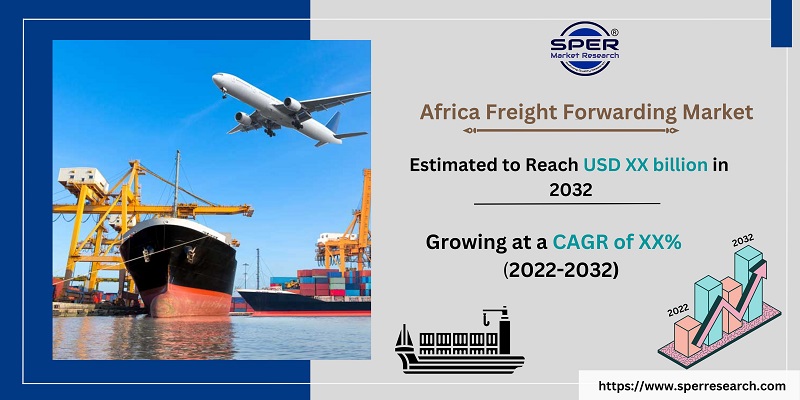
Africa Freight Forwarding Market Growth, Size, Revenue, Competition and Future Trends 2032
Africa Freight Forwarding Market Size- By Mode of Service, By End users- Regional Outlook, Competitive Strategies and Segment Forecast to 2032
| Published: Jan-2023 | Report ID: AMIN2313 | Pages: 1 - 104 | Formats*: |
| Category : Automotive & Transportation | |||


| Report Metric | Details |
| Market size available for years | 2019-2032 |
| Base year considered | 2021 |
| Forecast period | 2022-2032 |
| Segments covered | By Mode of Service, By End Users |
| Regions covered | South Africa, Kenya, Tanzania, Uganda, Nigeria, Namibia, Botswana |
| Companies Covered | Bollore Africa Logistics, Kuehne Nagej, Imperial Logistics, OneLogix, DHL, FedEx, Alistair, MeTL, Maersk Uganda Limited, Spedag Interfrieght, BHN Logistics, United Postal Services, Pacific International Lines, Seabelo Carriers, Worker Freight Service |
- Freight Forwarding Companies
- Frieght Forwarding Consultancy Companies
- Contact Logistics Companies
- Venture Capitalists
- Freight Tech Companies
- Consulting Companies
- Investment Banks
- Air Freight
- Rail Freight
- Road Freight
- Automotive
- Beverages
- Consumer Retail
- Food
- Healthcare
- Others
- South Africa
- Kenya
- Tanzania
- Uganda
- Nigeria
- Namibia
- Botswana
- Africa Freight Forwarding Market Size (FY’2019-FY’2032)
- Overview of Africa Freight Forwarding Market
- Segmentation of Africa Freight Forwarding Market by Mode of Service(Air Freight, Rail Freight, Road Freight)
- Segmentation of Africa Freight Forwarding Market By End Users (Automotive, Beverages, Consumer Retail, Food, Healthcare, Others)
- Statistical Snap of Africa Freight Forwarding Market
- Growth Analysis of Africa Freight Forwarding Market
- Problems and Challenges in Africa Freight Forwarding Market
- Competitive Landscape in the Africa Freight Forwarding Market
- Impact of COVID-19 and Demonetization on Africa Freight Forwarding Market
- Details on Recent Investment in Africa Freight Forwarding Market
- Competitive Analysis of Africa Freight Forwarding Market
- Key Players in the Africa Freight Forwarding Market
- SWOT Analysis of Africa Freight Forwarding Market
- Africa Freight Forwarding Market Future Outlook and Projections (FY’2019-FY’2032)
- Recommendations from Analyst
1. Introduction1.1. Scope of the report1.2. Market segment analysis
2.1 Research data source
2.1.1 Secondary data2.1.2 Primary data2.1.3 SPER’s internal database2.1.4 Premium insight from KOL’s
2.2 Market size estimation
2.2.1 Top-down and Bottom-up approach
2.3 Data triangulation
4.1. Driver, Restraint, Opportunity and Challenges analysis
4.1.1 Drivers4.1.2 Restraints4.1.3 Opportunities4.1.4 Challenges
4.2. COVID-19 Impacts of the Africa Freight Forwarding Market
5.1. SWOT analysis
5.1.1 Strengths5.1.2 Weaknesses5.1.3 Opportunities5.1.4 Threats
5.2. PESTEL analysis
5.2.1 Political landscape5.2.2 Economic landscape5.2.3 Social landscape5.2.4 Technological landscape5.2.5 Environmental landscape5.2.6 Legal landscape
5.3. PORTER’S five forces analysis
5.3.1 Bargaining power of suppliers5.3.2 Bargaining power of Buyers5.3.3 Threat of Substitute5.3.4 Threat of new entrant5.3.5 Competitive rivalry
5.4. Heat map analysis
6.1 Africa Freight Forwarding Market Manufacturing Base Distribution, Sales Area, Product Type6.2 Mergers & Acquisitions, Partnerships, Product Launch, and Collaboration in Africa Freight Forwarding Market
7.1 Air Freight7.2 Rail Freight7.3 Road Freight
8.1 Automotive8.2 Beverages8.3 Consumer Retail8.4 Food8.5 Healthcare8.6 Others
9.1 Africa Freight Forwarding Market Size and Market Share by Region (2019-2025)9.2 Africa Freight Forwarding Market Size and Market Share by Region (2026-2032)9.3 South Africa9.4 Kenya9.5 Tanzania9.6 Uganda9.7 Nigeria9.8 Namibia9.9 Botswana
10.1 Bollore Africa Logistics
10.1.1 Company details10.1.2 Financial outlook10.1.3 Product summary10.1.4 Recent developments
10.2 Kuehne Nagej
10.2.1 Company details10.2.2 Financial outlook10.2.3 Product summary10.2.4 Recent developments
10.3 Imperial Logistics
10.3.1 Company details10.3.2 Financial outlook10.3.3 Product summary10.3.4 Recent developments
10.4 Onelogix
10.4.1 Company details10.4.2 Financial outlook10.4.3 Product summary10.4.4 Recent developments
10.5 DHL
10.5.1 Company details10.5.2 Financial outlook10.5.3 Product summary10.5.4 Recent developments
10.6 FedEx
10.6.1 Company details10.6.2 Financial outlook10.6.3 Product summary10.6.4 Recent developments
10.7 Alistair
10.7.1 Company details10.7.2 Financial outlook10.7.3 Product summary10.7.4 Recent developments
10.8 MeTL
10.8.1 Company details10.8.2 Financial outlook10.8.3 Product summary10.8.4 Recent developments
10.9 Maersk Uganda Limited
10.9.1 Company details10.9.2 Financial outlook10.9.3 Product summary10.9.4 Recent developments
10.10 Spedag Interfreight
10.10.1 Company details10.10.2 Financial outlook10.10.3 Product summary10.10.4 Recent developments
10.11 BHN Logistics
10.11.1 Company details10.11.2 Financial outlook10.11.3 Product summary10.11.4 Recent developments
10.12 United Postal Services
10.12.1 Company details10.12.2 Financial outlook10.12.3 Product summary10.12.4 Recent developments
10.13 Pacific International Lines
10.13.1 Company details10.13.2 Financial outlook10.13.3 Product summary10.13.4 Recent developments
10.14 Seabelo Carriers
10.14.1 Company details10.14.2 Financial outlook10.14.3 Product summary10.14.4 Recent developments
10.15 Woker Freight Service
10.15.1 Company details10.15.2 Financial outlook10.15.3 Product summary10.15.4 Recent developments
SPER Market Research’s methodology uses great emphasis on primary research to ensure that the market intelligence insights are up to date, reliable and accurate. Primary interviews are done with players involved in each phase of a supply chain to analyze the market forecasting. The secondary research method is used to help you fully understand how the future markets and the spending patterns look likes.
The report is based on in-depth qualitative and quantitative analysis of the Product Market. The quantitative analysis involves the application of various projection and sampling techniques. The qualitative analysis involves primary interviews, surveys, and vendor briefings. The data gathered as a result of these processes are validated through experts opinion. Our research methodology entails an ideal mixture of primary and secondary initiatives.



Frequently Asked Questions About This Report
PLACE AN ORDER
Year End Discount
Sample Report
Pre-Purchase Inquiry
NEED CUSTOMIZATION?
Request CustomizationCALL OR EMAIL US
100% Secure Payment






Related Reports
Our Global Clients
Our data-driven insights have influenced the strategy of 200+ reputed companies across the globe.






















